Travel Reference
In-Depth Information
5
Carn a'Ghaill
(693ft)
Canna
Sanday
Kilmory
RED DEER
STUDY AREA
Guirdil
Kinloch
Castle
Orval
(1874ft)
Rùm
Hallival
(2372ft)
Harris
Trollaval
(2303ft)
Askival
(2663ft)
Sgùrr nan
Gillean
(2507ft)
Dibidil
Bay of
Laig
Cleadale
Beinn
Bhidha
N
Eigg
An Sgurr
(1292ft)
Galmisdale
Eilean
nan Each
Eilean
Chathastail
0
2
Muck
miles
THE SMALL ISLES
Gallanach
Port
Mor
Beinn Airein
(452ft)
Many people come on a day-trip from Mallaig. Yet the Small Isles deserve longer.
They are an opportunity to experience some off-grid island life while walking,
birdwatching or simply admiring seascapes. Accommodation requires
forward planning
and public transport on the islands is nonexistent. But regular ferries mean you're not
as cut off as the atmosphere suggests. Better still, services link all islands for a happy
week of island-hopping.
Brief history
The history of the Small Isles is typical of the Hebrides: early Christianization, followed
by Norwegian rule, ending in 1266 when the islands fell into Scottish hands. Their
support for the Jacobites resulted in hard times after the failed 1745 rebellion, but the
biggest problems came in the mid-eighteenth century. The success of potatoes grown
with traditional cereals eliminated famine at a stroke, prompting a population
explosion. In 1750, there were a thousand islanders. By 1800 that number had almost
doubled. At first, the problem of
overcrowding
was camouflaged by a kelp boom, but
the economic bubble burst with the end of the Napoleonic Wars and, to maintain
profit margins, the owners resorted to drastic action. The first to
sell
was Alexander
MacLean. Having acquired quotations to ship its people to Nova Scotia, he gave
islanders a year's notice and sold Rùm as grazing land. He also cleared Muck to graze
cattle, as did the MacNeills on Canna. Only on Eigg was compassion shown: the new
owner, a certain Hugh MacPherson, who bought the island in 1827, offered some
tenants extended leases.




























































































































































Search WWH ::

Custom Search